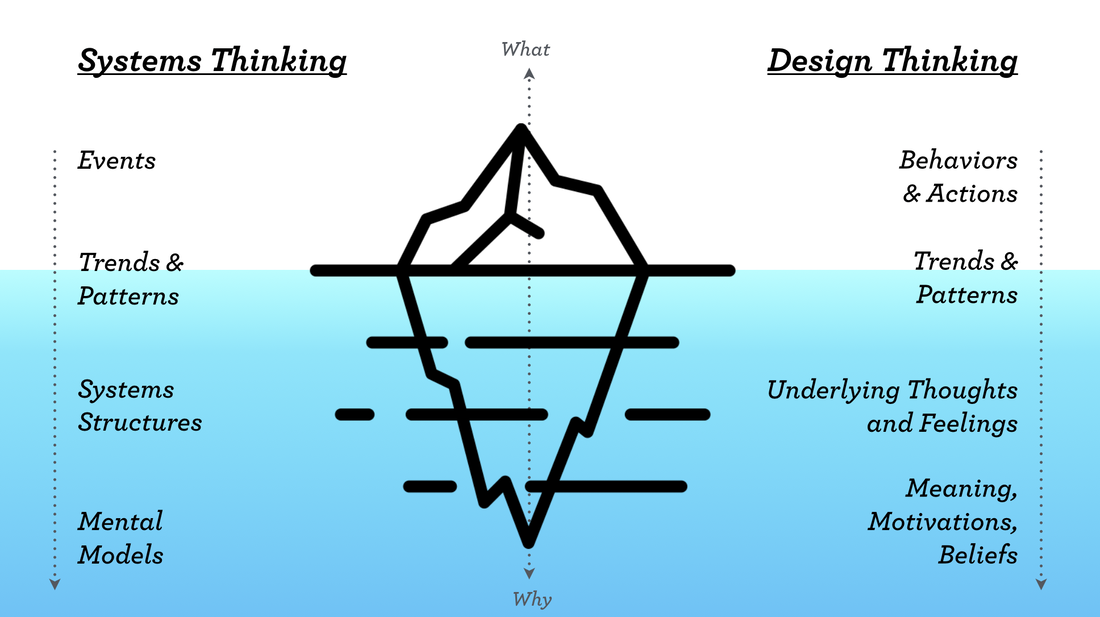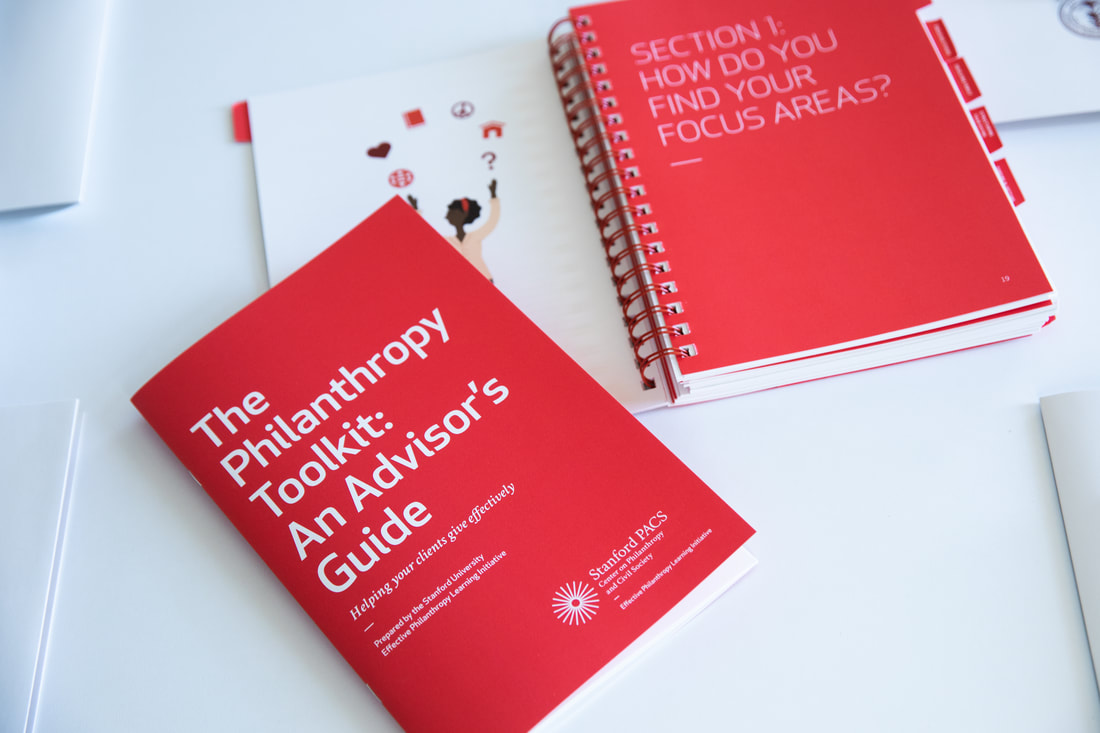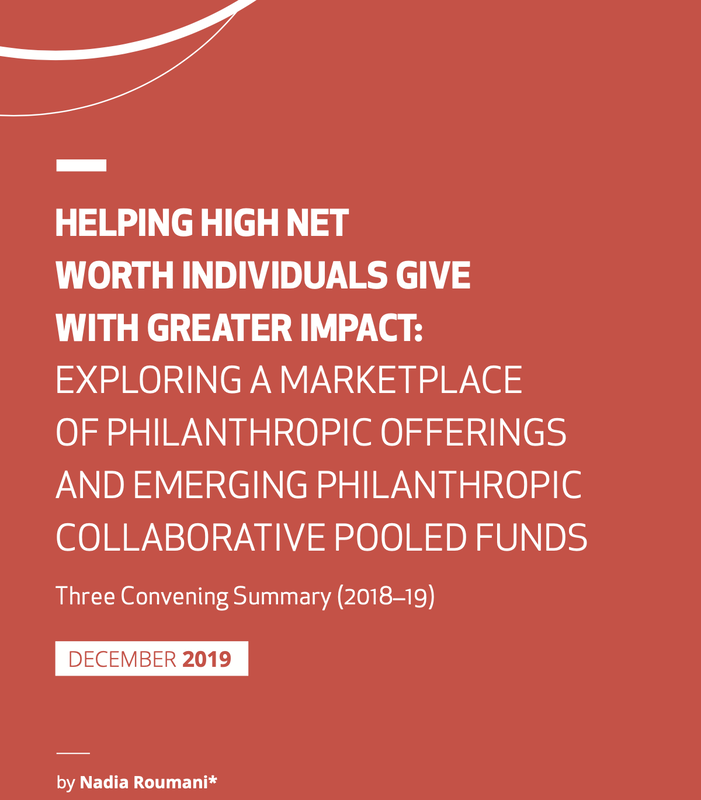Papers, Articles, and Toolkits
|
Design and Strategy Articles
|
|
Philanthropy Articles and Toolkits
|
| ||
Additional Publications:
- Building Capacity and Developing Leadership among American Muslims and Their Organizations with Brie Loskota, Brookings Institution August 2011.
Podcasts & Webinars
Schwab Charitable's Giving with Impact Podcast
Season 4 Episode 4
Exploring Philanthropic Approaches: Trust-based and Strategic Giving
Featuring Nadia Roumani and Philip Li of the Robert Sterling Clark Foundation
Since the late 1990's, the philanthropic sector has been focused on data- and results-driven approaches, often referred to under the umbrella of "strategic philanthropy." It can be argued that this thinking has strengthened the field of philanthropy in many ways, helping to bring greater rigor and focus to the hundreds of billions of dollars in annual charitable giving. At the same time, some have argued that an unexpected outcome of these practices is a distancing between donors and those grantees who are doing the work of effectively addressing issue areas, lessening their voice, and reinforcing systemic inequities. These critiques have led to the emergence of the movement known as trust-based philanthropy. At its core, trust-based philanthropy is about redistributing power—systemically, organizationally, and interpersonally—in service of a healthier and more equitable nonprofit sector. So, as a donor, how do you reconcile these two approaches? What does each mean for giving strategies? And are they really as disparate as some would believe?
Stanford Social Innovation Review Webinars
Designing Thinking for the Social Sector (III), 2019, Stanford Social Innovation Review
Integrating Design Thinking in Strategic Planning, October 1, 2019
Design thinking provides powerful methodology, mindsets, and tools to take on social sector work in more creative, effective, and human-centered ways. The exploratory nature of the design thinking method allows for the discovery of important insights at the people, program, and systems levels, and can lead to more effective solutions and programs. In Part I, we will showcase how design thinking and strategic planning can be linked, leading to a more manageable and tangible use of design thinking. Social sector leaders seeking to adopt innovative methods to tackle problems must do so while navigating resource and time constraints. While the design approach is exploratory, we provide the structure to learn, discover, and experiment with intention.
Strategy, alongside the design approach, keeps goals and pressing questions in view while applying creative thinking to project work. Using a case study, and working within a guiding framework, you will learn how to link design and strategy, and approaches to implement both. We will introduce a theory of change framework that clarifies an organization’s current logic and vision, and illuminates existing questions and assumptions. These questions and assumptions help you frame your design work and launch a design thinking approach. We will then show you how to craft a ‘design expedition,’ which helps you identify what you are looking to learn, scope the process for gathering the information, and carry out the work. Expeditions are intended to be discovery focused, but simultaneously time-bound, allowing individuals and teams to integrate deep insights into their work while continuing to adhere to a traditional project timeline.
People, Programs and Systems, October 8, 2019
Rarely does an organization receive a blank check and unlimited time to explore a challenge and discover new opportunities. Instead, overworked and under-resourced teams are asked to be innovative, but not given the resources to do so. In Part II, we will tackle the most common issues and obstacles of using design thinking, specific to the social sector. Design thinking is action-oriented, deeply human, and experimental; this method can help us create interventions that serve people better and create more effective change in the world. While many design thinking approaches are thought of as natural human behaviors , they can sometimes run counter to current norms and practices in social sector organizations. And knowing when, how, and which methods to apply can be a challenge in itself. Using real world examples, we will discuss common obstacles and questions to using design thinking, and ways to overcome them, including:
Designing Thinking for the Social Sector (II), 2017, Stanford Social Innovation Review
Design Thinking for Social Change (I), 2015, Stanford Social Innovation
Design Thinking to Solve Social Problems with Nadia Roumani
Design Thinking to Drive Organizational Strategy with Nadia Roumani and Paul Brest
Season 4 Episode 4
Exploring Philanthropic Approaches: Trust-based and Strategic Giving
Featuring Nadia Roumani and Philip Li of the Robert Sterling Clark Foundation
Since the late 1990's, the philanthropic sector has been focused on data- and results-driven approaches, often referred to under the umbrella of "strategic philanthropy." It can be argued that this thinking has strengthened the field of philanthropy in many ways, helping to bring greater rigor and focus to the hundreds of billions of dollars in annual charitable giving. At the same time, some have argued that an unexpected outcome of these practices is a distancing between donors and those grantees who are doing the work of effectively addressing issue areas, lessening their voice, and reinforcing systemic inequities. These critiques have led to the emergence of the movement known as trust-based philanthropy. At its core, trust-based philanthropy is about redistributing power—systemically, organizationally, and interpersonally—in service of a healthier and more equitable nonprofit sector. So, as a donor, how do you reconcile these two approaches? What does each mean for giving strategies? And are they really as disparate as some would believe?
Stanford Social Innovation Review Webinars
Designing Thinking for the Social Sector (III), 2019, Stanford Social Innovation Review
Integrating Design Thinking in Strategic Planning, October 1, 2019
Design thinking provides powerful methodology, mindsets, and tools to take on social sector work in more creative, effective, and human-centered ways. The exploratory nature of the design thinking method allows for the discovery of important insights at the people, program, and systems levels, and can lead to more effective solutions and programs. In Part I, we will showcase how design thinking and strategic planning can be linked, leading to a more manageable and tangible use of design thinking. Social sector leaders seeking to adopt innovative methods to tackle problems must do so while navigating resource and time constraints. While the design approach is exploratory, we provide the structure to learn, discover, and experiment with intention.
Strategy, alongside the design approach, keeps goals and pressing questions in view while applying creative thinking to project work. Using a case study, and working within a guiding framework, you will learn how to link design and strategy, and approaches to implement both. We will introduce a theory of change framework that clarifies an organization’s current logic and vision, and illuminates existing questions and assumptions. These questions and assumptions help you frame your design work and launch a design thinking approach. We will then show you how to craft a ‘design expedition,’ which helps you identify what you are looking to learn, scope the process for gathering the information, and carry out the work. Expeditions are intended to be discovery focused, but simultaneously time-bound, allowing individuals and teams to integrate deep insights into their work while continuing to adhere to a traditional project timeline.
People, Programs and Systems, October 8, 2019
Rarely does an organization receive a blank check and unlimited time to explore a challenge and discover new opportunities. Instead, overworked and under-resourced teams are asked to be innovative, but not given the resources to do so. In Part II, we will tackle the most common issues and obstacles of using design thinking, specific to the social sector. Design thinking is action-oriented, deeply human, and experimental; this method can help us create interventions that serve people better and create more effective change in the world. While many design thinking approaches are thought of as natural human behaviors , they can sometimes run counter to current norms and practices in social sector organizations. And knowing when, how, and which methods to apply can be a challenge in itself. Using real world examples, we will discuss common obstacles and questions to using design thinking, and ways to overcome them, including:
- How can I integrate this into my and my team’s work, when we have such limited time and resources dedicated to exploratory work?
- How do I share unfinished work and the overall approach with other teams in an organization that does not have a culture of change and exploration?
- How do we help teams that have been working for years in a massive bureaucracy to believe that their creativity and efforts matter and can have an impact?
- How do you manage and track a design project? How can we report on a design approach in the same way we track our project delivery programs?
Designing Thinking for the Social Sector (II), 2017, Stanford Social Innovation Review
Design Thinking for Social Change (I), 2015, Stanford Social Innovation
Design Thinking to Solve Social Problems with Nadia Roumani
Design Thinking to Drive Organizational Strategy with Nadia Roumani and Paul Brest


